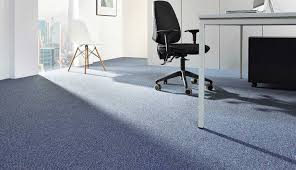
Carpets have been an integral part of human culture for centuries, خرید موکت اداری providing both aesthetic beauty and functional benefits. Their history is rich and varied, spanning across different civilizations and regions, each contributing unique styles and techniques to the craft. This article explores the fascinating journey of carpets, from their ancient origins to their contemporary significance.
A Glimpse into History
The earliest known carpets date back to the 5th century BC, with the Pazyryk carpet discovered in Siberia being one of the most ancient examples. This remarkable find revealed the sophisticated weaving techniques and intricate designs that were already in use over 2,500 years ago. Carpets from ancient Persia (modern-day Iran) are particularly renowned, with the Persian carpet becoming synonymous with high-quality craftsmanship and elaborate patterns.
Cultural Significance
Throughout history, carpets have held significant cultural and symbolic meaning. In many cultures, they are not just floor coverings but also important elements of social and religious practices. For instance, in Islamic culture, prayer rugs are essential for daily worship, providing a clean and sacred space for prayer. Similarly, in many Asian and Middle Eastern cultures, carpets are used in ceremonies and as dowry items, symbolizing wealth and status.
The Art of Carpet Making
Carpet making is a meticulous art that involves various techniques, including weaving, knotting, and tufting. Traditional hand-woven carpets, often referred to as oriental rugs, are highly prized for their quality and craftsmanship. These carpets are made by skilled artisans who spend months, sometimes years, creating intricate patterns and designs using natural dyes and high-quality wool or silk.
Modern carpet manufacturing has also evolved, with advanced machinery and synthetic materials allowing for mass production and greater affordability. However, hand-made carpets remain highly valued for their uniqueness and the personal touch they carry from the weavers.
Functional Benefits
Beyond their aesthetic appeal, carpets offer numerous practical advantages. They provide comfort and warmth, especially in colder climates, making homes and buildings more inviting and cozy. Carpets also act as sound insulators, reducing noise levels by absorbing sound, which is particularly beneficial in multi-story buildings and office spaces.
Moreover, carpets enhance indoor air quality by trapping dust, allergens, and other particles, preventing them from circulating in the air. Regular cleaning and maintenance are essential to keep carpets hygienic and long-lasting.
Contemporary Trends
In today’s interior design landscape, carpets continue to play a crucial role. Modern designs range from minimalist and monochromatic styles to bold and colorful patterns, catering to diverse tastes and preferences. Eco-friendly carpets made from sustainable materials like bamboo, recycled plastic, and natural fibers are also gaining popularity, reflecting a growing awareness of environmental impact.
Carpets are now being used creatively, not just as floor coverings but also as wall hangings, decorative pieces, and even in outdoor spaces. The versatility and adaptability of carpets make them an enduring choice for homeowners and designers alike.
Conclusion
The journey of carpets from ancient times to the present day is a testament to their enduring appeal and functionality. They are more than just decorative items; carpets are woven into the fabric of our lives, reflecting cultural heritage, artistic expression, and practical utility. As we continue to innovate and adapt, the timeless elegance of carpets will undoubtedly remain a cherished aspect of human living spaces.